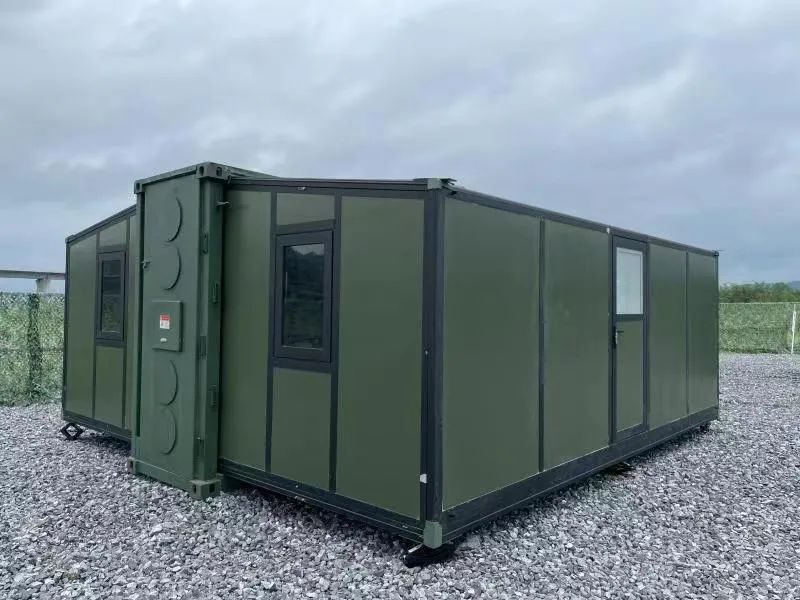The two departments are clear: Before 2030, the carbon emissions in the field of urban and rural construction reached the peak of the two departments.
Author:China Economic Network Time:2022.07.14
Urban and rural construction is one of the main areas of carbon emissions. With the acceleration of urbanization and the in -depth adjustment of the industrial structure, the carbon emissions volume and its total carbon emissions in the field of urban and rural construction will further increase. Recently, the "Implementation Plan for Carbon Peak in the field of urban and rural construction" issued by the Ministry of Housing and Urban -Rural Development and the National Development Reform Commission (hereinafter referred to as the "Implementation Plan") proposed that before 2030, the carbon emissions in the urban and rural construction field reached the peak, and the urban and rural construction was green and low. The carbon development policy system and institutional mechanism are basically established.
The "Implementation Plan" pointed out that by 2030, the level of energy saving and garbage resources and the utilization of construction of construction has been greatly improved, and the efficiency of energy resource utilization has reached the international advanced level; the energy structure and method are more optimized, and the renewable energy application is more sufficient; the urban and rural construction methods are green. Low -carbon transformation has made positive progress, and "a large number of construction, a large amount of consumption, and a large amount of emissions" basically reverses; the overall, systemic, and growth of the city is enhanced, and the problem of "urban diseases" is initially resolved.
The "Implementation Plan" proposes to comprehensively improve the level of green low -carbon buildings and continue to carry out the creation of green buildings. In 2025, new buildings in urban buildings are fully implemented with green building standards. Star green buildings account for more than 30%. All buildings and large public buildings have all reached one star. In terms of promoting green and low -carbon construction, the "Implementation Plan" requires that by 2030, the proportion of new buildings in urban and towns will reach 40%of the year, and 100 intelligent construction industrial bases will be cultivated. Promote the factory and precise processing and refined management of building materials. By 2030, the construction material loss rate at the construction site will decrease 20%from 2020.
Regarding existing buildings, the "Implementation Plan" pointed out that strict existing construction demolition management, insisting on "demolition and retention" to "retention and disassembly" to promote urban renewal, except for illegal buildings and professional institutions identified as dangerous houses without repair and reservation value value Outside the building, there are not large -scale and centralized demolition of the current building, and the demolition of the urban renewal unit (area) or in the project should not be greater than 20%of the total building area in principle. Normally survive houses and reduce various types of vacant houses.
The "Implementation Plan" also proposes to carry out the construction of green low -carbon counties and build a county -oriented county pattern with a small -scale and pleasant scale. In terms of building a green and low -carbon city, the "Implementation Plan" proposes to optimize the urban structure and layout. Actively carry out the construction of green low -carbon cities and promote the development of group -type. The area of each group does not exceed 50 square kilometers. In principle, the average population density in the group does not exceed 10,000 per square kilometer per square kilometer, and the maximum of up to 15,000 people per square kilometer in individual areas.
Original title: The two departments are clear: carbon emissions in the field of urban and rural construction before 2030 reached the peak
Urban and rural construction is one of the main areas of carbon emissions. With the acceleration of urbanization and the in -depth adjustment of the industrial structure, the carbon emissions volume and its total carbon emissions in the field of urban and rural construction will further increase. Recently, the "Implementation Plan for Carbon Peak in the field of urban and rural construction" issued by the Ministry of Housing and Urban -Rural Development and the National Development Reform Commission (hereinafter referred to as the "Implementation Plan") proposed that before 2030, the carbon emissions in the urban and rural construction field reached the peak, and the urban and rural construction was green and low. The carbon development policy system and institutional mechanism are basically established.
The "Implementation Plan" pointed out that by 2030, the level of energy saving and garbage resources and the utilization of construction of construction has been greatly improved, and the efficiency of energy resource utilization has reached the international advanced level; the energy structure and method are more optimized, and the renewable energy application is more sufficient; the urban and rural construction methods are green. Low -carbon transformation has made positive progress, and "a large number of construction, a large amount of consumption, and a large amount of emissions" basically reverses; the overall, systemic, and growth of the city is enhanced, and the problem of "urban diseases" is initially resolved.
The "Implementation Plan" proposes to comprehensively improve the level of green low -carbon buildings and continue to carry out the creation of green buildings. In 2025, new buildings in urban buildings are fully implemented with green building standards. Star green buildings account for more than 30%. All buildings and large public buildings have all reached one star. In terms of promoting green and low -carbon construction, the "Implementation Plan" requires that by 2030, the proportion of new buildings in urban and towns will reach 40%of the year, and 100 intelligent construction industrial bases will be cultivated. Promote the factory and precise processing and refined management of building materials. By 2030, the construction material loss rate at the construction site will decrease 20%from 2020.
Regarding existing buildings, the "Implementation Plan" pointed out that strict existing construction demolition management, insisting on "demolition and retention" to "retention and disassembly" to promote urban renewal, except for illegal buildings and professional institutions identified as dangerous houses without repair and reservation value value Outside the building, there are not large -scale and centralized demolition of the current building, and the demolition of the urban renewal unit (area) or in the project should not be greater than 20%of the total building area in principle. Normally survive houses and reduce various types of vacant houses.
The "Implementation Plan" also proposes to carry out the construction of green low -carbon counties and build a county -oriented county pattern with a small -scale and pleasant scale. In terms of building a green and low -carbon city, the "Implementation Plan" proposes to optimize the urban structure and layout. Actively carry out the construction of green low -carbon cities and promote the development of group -type. The area of each group does not exceed 50 square kilometers. In principle, the average population density in the group does not exceed 10,000 per square kilometer per square kilometer, and the maximum of up to 15,000 people per square kilometer in individual areas.
Original title: The two departments are clear: carbon emissions in the field of urban and rural construction before 2030 reached the peak
- END -
This vaccine may be approved for vaccination!

*For medical professionals for reading referenceActive promotion of new crown vacc...
Building a large barracks in 90 seconds can resist level 10!

The island version of the disassembly loading barracks!Can prevent salt and fog, c...